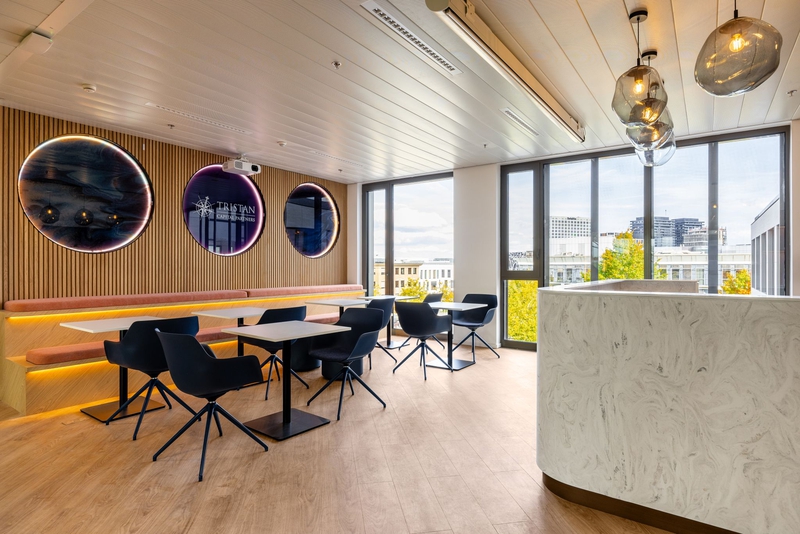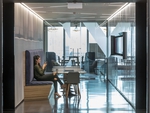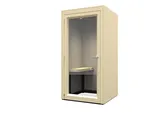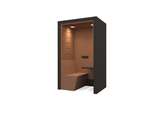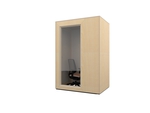Dec. 7, 2020
Industry Trends, Return to the Workspace Solutions
Video conferencing has allowed many of us to keep working from home during the pandemic. It’s changed how we work: in 2020, first-time installations of Zoom’s mobile app have risen by more than 700%, while Microsoft has seen a 500% increase in the use of its Team software. Workforces are now distributed across more locations than ever, and employees have grown reliant on video calls to maintain high levels of collaboration, teamwork and rapport: according to GigaOm Research, 87% of employees feel more connected with coworkers when using video conferencing software.

Now that offices are repopulating at lower occupancy levels, we’re seeing a record number of video calls between those working in the office and those working from home. These are replacing face-to-face meetings in meeting rooms; and with the increasing popularity of hybrid work (a mixture of working in the office and working from home) and “work from anywhere” employment, video conferencing is here to stay. In the US, says Kate Lister, President of Global Workplace Analytics, “25-30% of the workforce will be working-from-home multiple days a week by the end of 2021.” How we work is changing fast, so workplaces must change fast too.
The One-Sided Conversation Problem
Video meetings are the new normal, which causes a problem in most offices. A video call requires certain levels of privacy and quiet that are hard to find in open-plan workspaces. Furthermore, video calls are distracting to those overhearing them. Not only are they often noisy, but only hearing half of a conversation is proven to be far more distracting than hearing the whole conversation: this is because our brains are constantly trying to fill in the blanks, hindering our ability to focus. So this presents a challenge: where should we take our video calls?

At the moment, employees are making do with phone booths and office pods. Unfortunately these can’t provide an optimum environment as they’re designed for a different purpose: for drop-in phone calls of up to, say, 30 minutes. They’re great for this, but not for long video conferences. Other employees also use whole meeting rooms for a one-person call; which is more comfortable, but very inefficient in terms of space. It also prevents face-to-face meetings from taking place in meeting rooms, which is what they’re actually designed for.
Employees are most productive when workplaces are designed to fit their needs and help them to shine. So, what’s the solution?
Video Conferencing Pods
Video conferencing booths are designed to provide a great virtual meeting experience. They have excellent acoustic properties and clouded glass for privacy, and their lighting, ventilation and ergonomics can all be easily adjusted to suit each user. They offer a quiet, private space in which employees can focus on their meetings.
Workplace video booths are deeper than phone booths, which allows the camera to be positioned a comfortable distance away, avoiding unflattering, mugshot-like close-ups. They’re also designed with inclusivity and accessibility in mind. Lighting and interior finishes are chosen to support the visual representation of all people, regardless of skin tone and clothing choice, so that everyone looks good on camera; which helps with self-confidence, legibility and clarity.
Hidden Benefits
Workplace video pods improve the capacity for collaboration by increasing room availability in the office, and also by making it easier to connect with coworkers working elsewhere. By removing calls from shared desk areas, these video call pods allow everyone else to focus on their own tasks. They’re quicker and cheaper to install than meeting rooms, and take up much less space. Also their modular design is far more flexible: video conferencing pods can be used for zoning an open floor plan, and can easily be moved around as a company’s needs change. Video conferencing pods contribute to an agile and innovative workplace design that can adapt to constantly changing, fast-moving times like ours.

Connecting Everyone and Everywhere
Video conferencing isn’t going away. So we need to be building spaces for virtual meetings into workplace strategies, and these spaces should be designed for an optimum experience from the ground up. Workplaces are distributed like never before, across offices and homes and coworking spaces, all around the world—and video conferencing booths are the key to connecting up those many different locations. Hybrid ways of working call for hybrid spaces; and workplace video booths allow us to seamlessly expand the office into the home and the virtual world.
For more infomation on the ultimate video conferencing experience, take a look at The Residence Connect.
Share this article




